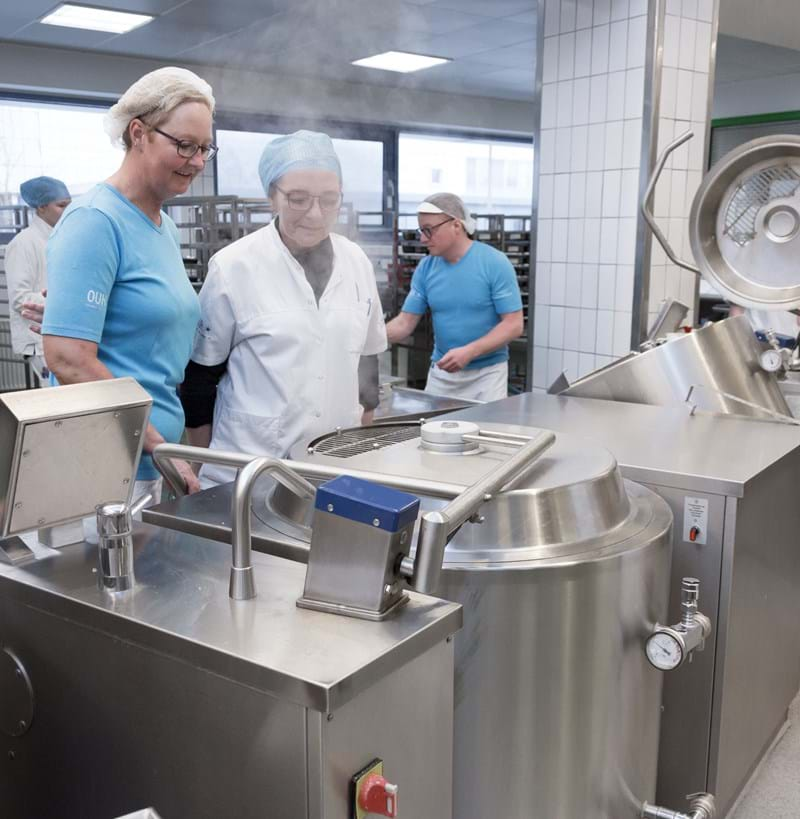

Jacket chilling using chilled water from an external chilling system can be used to cool the kettle. The water is fed through the steam jacket, where it chills the contents of the kettle and returns to the ice bank. It is a simple and reliable way of chilling.
Water consumption is low and the chilling effect is high, as the temperature of the chilled water is typically 0.5˚C. Edge freezing is avoided as the chilled water is above freezing point. The stirrer can therefore rotate slowly, stirring the food gently.
When the chilling ends, the correct water level in the steam generator is automatically restored.
The dimensions of the chilling system and the ice bank will depend on the number and size of kettles and the expected number of chilling cycles per day. These dimensions must therefore be determined by a chilling systems contractor, who can also assess whether the existing chilling equipment can be reused and whether a supply of ice can be built up overnight.

The upper rim of the kettle is unheated and insulated. This reduces heat radiation and saves energy, also minimizing the risk of burn to the operator.
This design also ensures that the food does not burn in the kettle spout when the kettle is emptied, which would reduce the quality of the food and cause cleaning to take longer.

The display normally shows the actual temperature of the food, but a keypress gives access to display and alter the temperature setpoint. This is set quickly and precisely to between 1 and 120°C.
The heating supply is controlled automatically to ensure that the required food temperature is reached.
Controlling the heating supply according to the food temperature ensures that the required food temperature is achieved and maintained and means that the user only needs to give the kettle minimal attention.
To avoid burning and enable gentle heating, the intensity of the heat input can be adjusted in four dynamic steps. These steps control the temperature of the inner pot in relation to the temperature of the food. At a low value, the cooking is gentle but slow. At a high value, it is less gentle but fast.
This provides easy and safe heating of e.g. dairy products.
By controlling the heating based on the food temperature and setting the desired value as low as possible for the desired task, very large amounts of energy can be saved and becomes one of the largest contributors to energy savings.

The stirrer in the kettle saves both time and effort, partly because stirring can be performed automatically, but also because more stirring eases the preparation of many dishes.
The integrated stirrer makes it possible to keep the lid closed and keep the heat and steam inside. This reduces energy consumption and steam in the kitchen.
The mixer tool is always accessible and by opening the lid the contents of the kettle can be checked or ingredients added. The scrapers reduce the risk of the food burning and sticking to the kettle sides and eases the cleaning.

The kettles have a hinged lid in stainless steel. All kettles with a stirrer are fitted with a practical inspection hatch and associated lid as standard.
This is used when adding ingredients while the stirrer is operating, e.g. when thickening and is indispensable i most kitchens.

